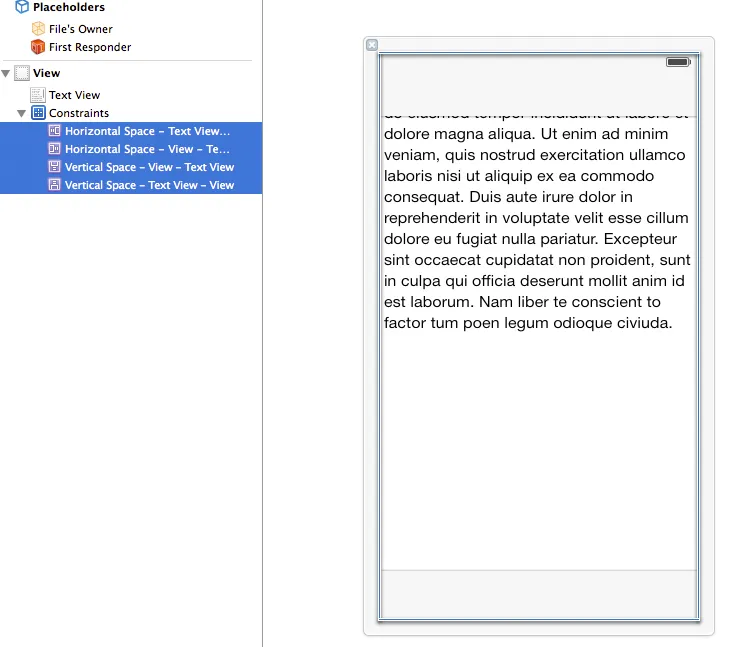这个问题已经被问过几次了,但我真的找不到答案...
iOS6中,我使用以下代码调整UITextView的大小,每当键盘出现时就会调用。在iOS7下,行为并不像应该的那样(在我的情况下,似乎什么都没有调整)。我怀疑原因是iOS7的自动布局/约束行为。有什么建议吗?("notePad"是我的UITextView)?
- (void)keyboardWasShown:(NSNotification*)aNotification
{
NSDictionary* info = [aNotification userInfo];
CGSize kbSize = [[info objectForKey:UIKeyboardFrameBeginUserInfoKey] CGRectValue].size;
//NSLog(@"KeyboardSize: %f.%f", kbSize.width, kbSize.height);
UIEdgeInsets contentInsets = UIEdgeInsetsMake(0.0, 0.0, (kbSize.width > kbSize.height ?
kbSize.height : kbSize.width), 0);
self.notePad.contentInset = contentInsets;
self.notePad.scrollIndicatorInsets = contentInsets;
}

[self observeKeyboard];才能让它正常工作! - Manesh